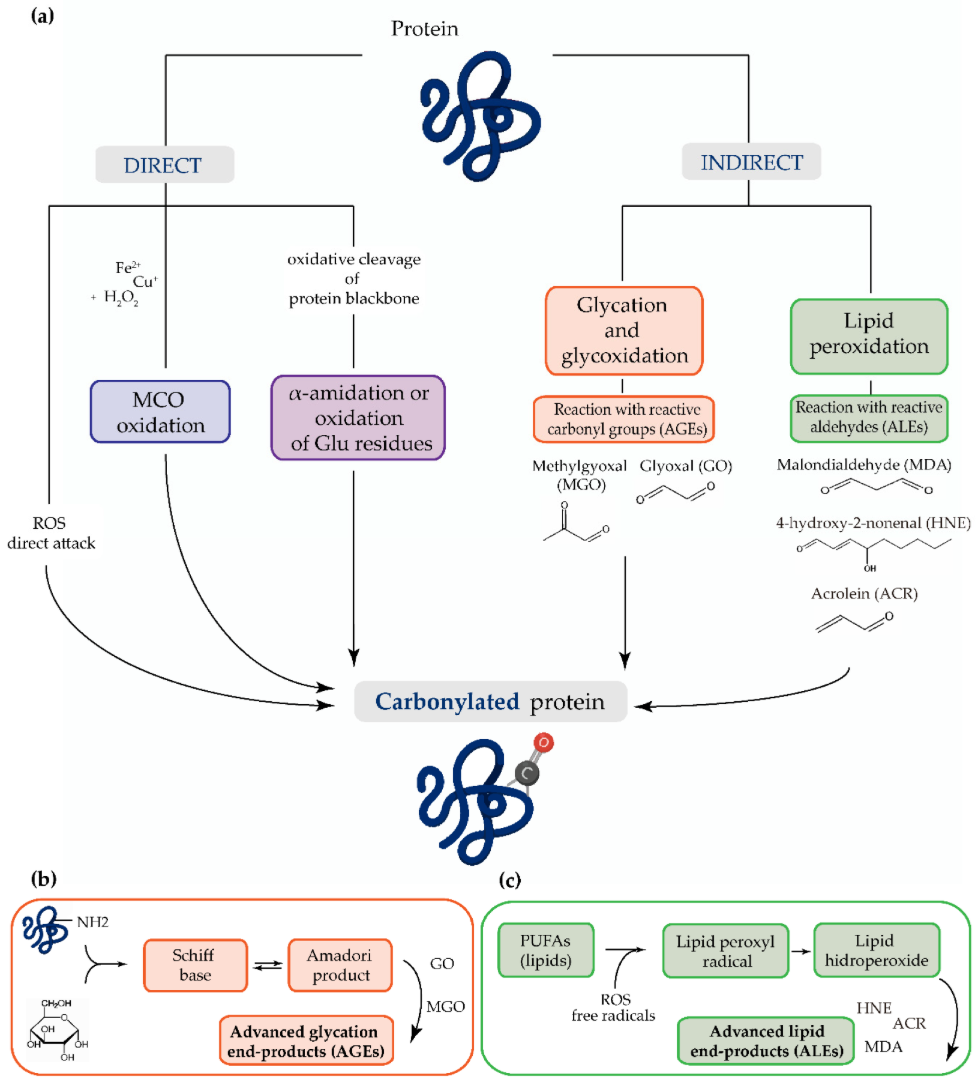Carbonylation Analysis Service
Protein carbonylation is one of the most widely studied oxidative post-translational modifications and plays a key role in regulating protein stability, activity, and cellular homeostasis. It has been linked to oxidative stress responses, disease progression, and biomarker discovery, making its accurate analysis critical for both fundamental and translational research. MtoZ Biolabs offers a comprehensive Carbonylation Analysis Service that enables accurate detection, quantification, and characterization of carbonylated proteins. By integrating advanced mass spectrometry, optimized enrichment strategies, and robust bioinformatics, we provide both targeted protein analysis and proteome-wide carbonylation profiling. Clients only need to provide biological samples, and we manage the entire workflow, from protein extraction and derivatization to quantitative analysis and data interpretation, delivering actionable results to support basic and translational research.
🧩Target Protein Carbonylation Analysis
This service focuses on the precise detection and quantification of carbonylation on a single, targeted protein. It is ideal for studies investigating the role of carbonylation in specific proteins. Using mass spectrometry and optimized enrichment strategies, we provide detailed data on carbonylation sites, stability, and function.
🧩Carbonylation Proteomics
For a broader analysis, we offer proteome-wide carbonylation profiling. This service enables the identification and quantification of carbonylated proteins across entire proteomes, providing insights into the global impact of carbonylation in biological systems.
What is Carbonylation?
Protein carbonylation occurs when reactive oxygen species (ROS) or lipid peroxidation products attack amino acid side chains, such as lysine, arginine, threonine, and proline. Unlike many reversible modifications, carbonylation is irreversible, making it a stable marker of oxidative protein damage. Several biochemical mechanisms underlie carbonylation, including direct oxidation of amino acid side chains, secondary reactions with aldehydes derived from lipid peroxidation, and glycation reactions that introduce carbonyl groups. Because of its stability, carbonylation serves as an excellent readout of cumulative oxidative stress within biological systems.

Rodríguez-García, A. et al. Antioxidants (Basel). 2020.
Figure 1. The Direct and Indirect Mechanisms of Protein Carbonylation
Carbonylated proteins have been linked to altered enzymatic activity, disrupted protein–protein interactions, and impaired degradation pathways. The accumulation of such proteins is associated with aging, neurodegenerative diseases such as Alzheimer's and Parkinson's, cardiovascular disorders, diabetes, and chronic inflammatory conditions. Moreover, carbonylation has been used as a biomarker for assessing environmental stress, toxicological exposure, and therapeutic interventions.
Due to its complexity and biological significance, accurate mapping and quantification of protein carbonylation require sensitive and well-validated analytical platforms. MtoZ Biolabs provides such solutions through its integrated service pipeline.
Analysis Workflow
1. Sample Preparation: Cells, tissues, plasma, serum, or purified proteins are collected under conditions optimized to prevent artificial oxidation.
2. Protein Extraction: Proteins are extracted and solubilized from the biological matrix using optimized buffers.
3. Derivatization of Carbonyl Groups: Carbonyl moieties are chemically derivatized with reagents such as DNPH to enable selective detection.
4. Protein Digestion: Proteins are enzymatically digested, typically with trypsin, into peptides suitable for downstream analysis.
5. Enrichment of Derivatized Peptides: Selective enrichment strategies are applied to isolate derivatized carbonylated peptides, improving sensitivity.
6. LC-MS/MS Analysis: Enriched peptides are analyzed using high-resolution liquid chromatography–tandem mass spectrometry to identify and localize carbonylation sites.
7. Data Processing: Raw MS data are processed to identify modified peptides, quantify carbonylation levels, and compare across experimental groups.
8. Bioinformatics Analysis: Pathway enrichment, functional annotation, and protein interaction mapping are performed to interpret the biological significance of identified modifications.
Sample Submission Suggestions
🔸Sample Types: Cells, tissues, serum, plasma, and purified proteins are suitable. If you paln to submit other types of samples, please contact us in advance for tailored preparation guidance.
🔸Handling Conditions: Avoid the use of strong oxidizing or reducing agents that may artificially affect carbonylation levels.
🔸Storage: Flash-freeze samples in liquid nitrogen and store at –80°C.
🔸Shipping: Transport samples on dry ice to preserve stability.
🔸Replicates: Biological replicates are recommended for statistical reliability.
Service Advantages
☑️High Sensitivity: Detection of low-abundance carbonylated proteins through optimized derivatization and enrichment.
☑️Advanced Instrumentation: High-resolution LC-MS/MS platforms ensuring accurate site identification.
☑️Customizable Workflows: Flexible study designs tailored to specific research objectives.
☑️Expert Team: Experienced scientists with extensive expertise in oxidative PTM analysis.
☑️Rapid Turnaround: Efficient workflows for timely delivery of results.
Applications
Protein carbonylation analysis supports diverse research areas:
1. Oxidative Stress Biology: Understanding protein oxidation in physiological and pathological contexts.
2. Disease Mechanisms: Elucidating the role of carbonylation in aging, neurodegeneration, cardiovascular disorders, and diabetes.
3. Biomarker Discovery: Identifying carbonylated proteins as indicators of oxidative damage and disease progression.
4. Toxicology and Environmental Stress: Assessing the impact of toxins, pollutants, and radiation on protein integrity.
5. Drug Development: Evaluating therapeutic interventions that modulate oxidative stress and protein stability.
Deliverables
1. Comprehensive Experimental Details
2. Materials, Instruments, and Methods
3. Total Ion Chromatogram & Quality Control Assessment
4. Data Analysis, Preprocessing, and Estimation
5. Bioinformatics Analysis
6. Raw Data Files
For more information about our Carbonylation Analysis Service, please contact us. Our technical specialists are available to provide a free business assessment.







